In Principio Erat Verbum
Ketty La Rocca
- Presented by — Amanda Wilkinson
- Ketty La Rocca, In Principio Erat Verbum, 1970-72, performance for Amanda Wilkinson at 9 Cork Street for Performance Exchange 2022. Courtesy of Amanda Wilkinson and the Ketty La Rocca Estate. Image: Damian Griffiths.

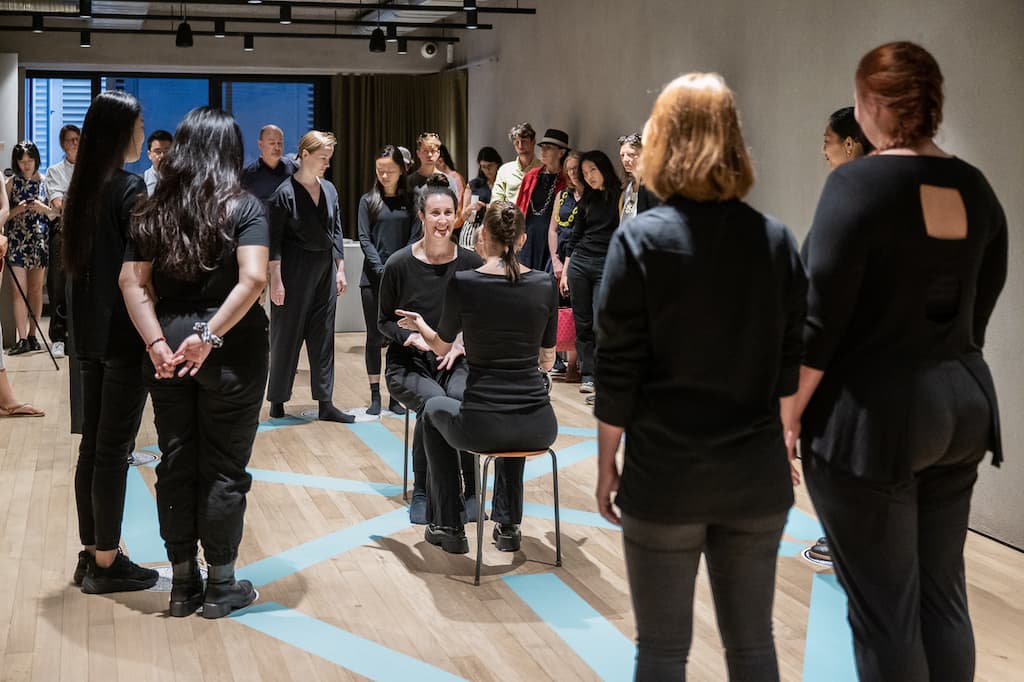
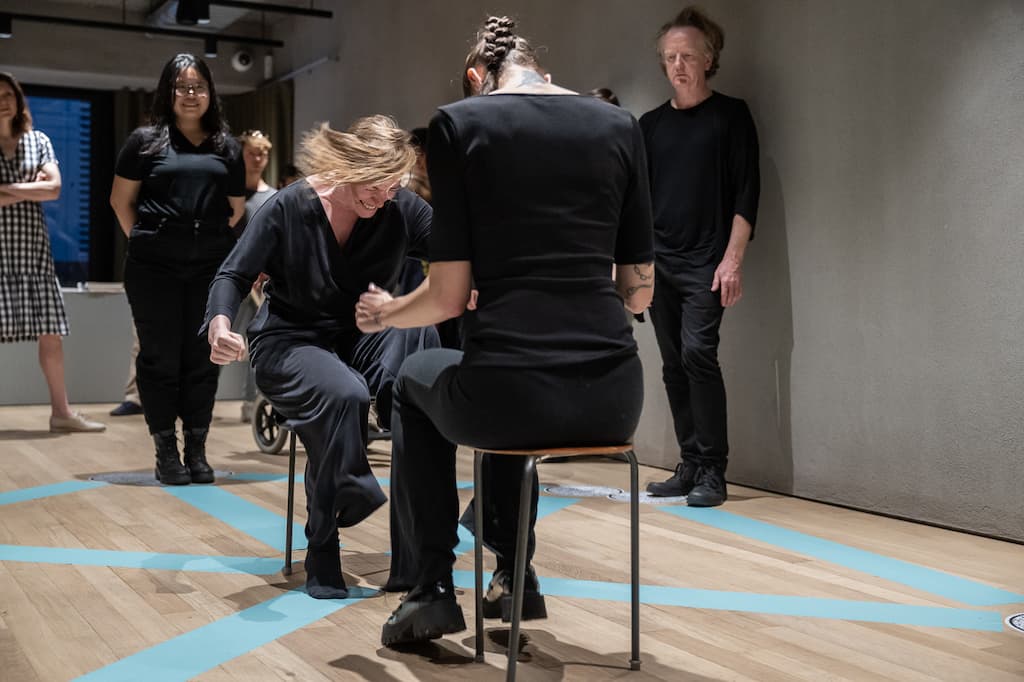
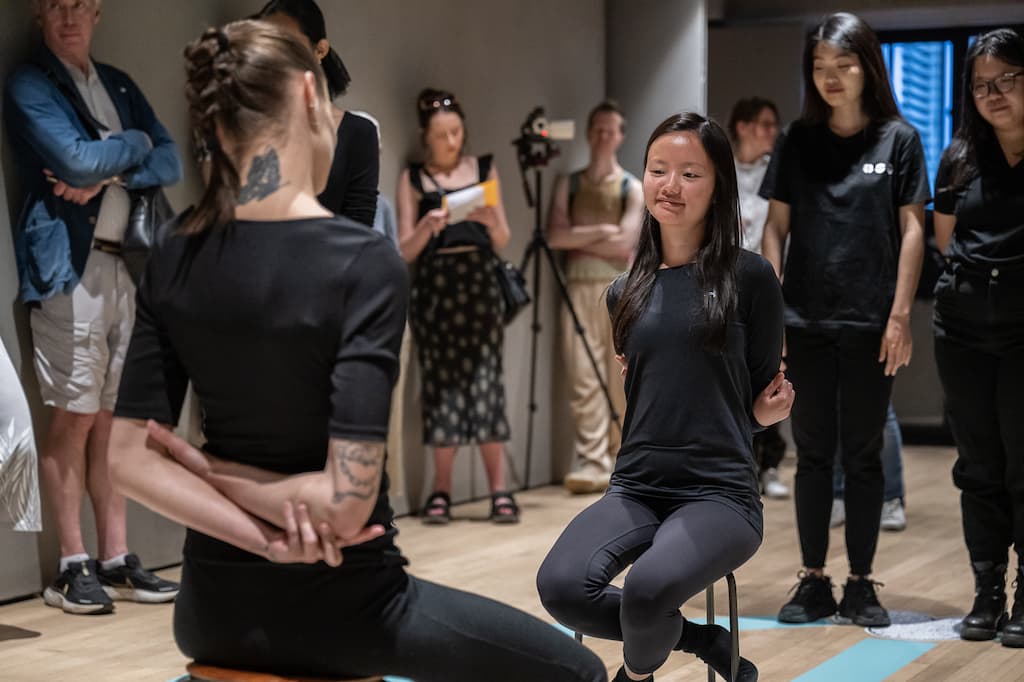
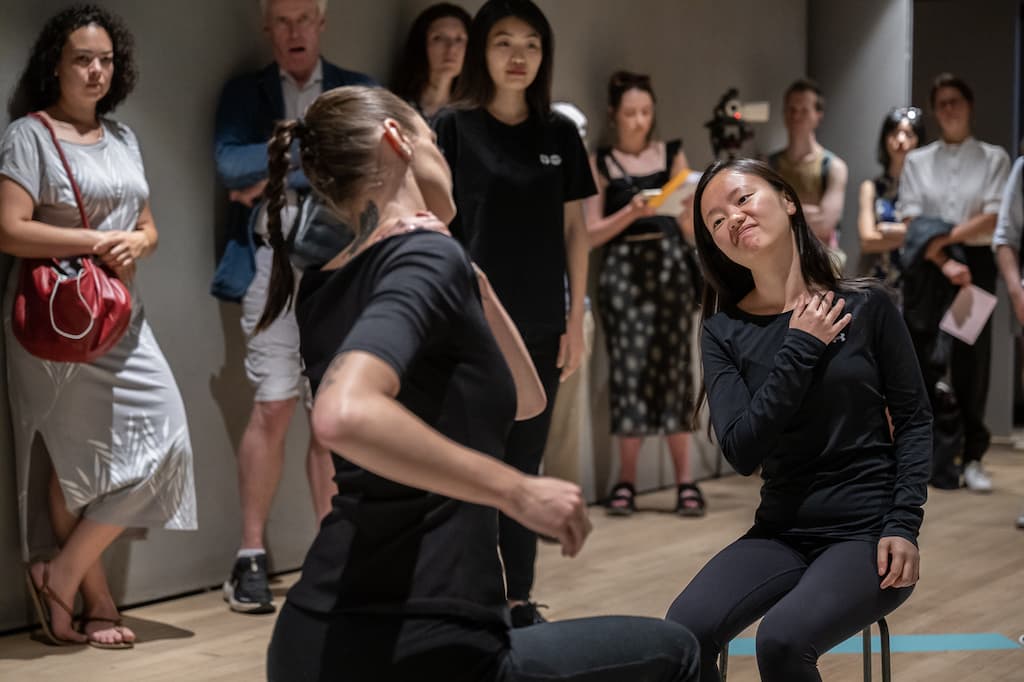
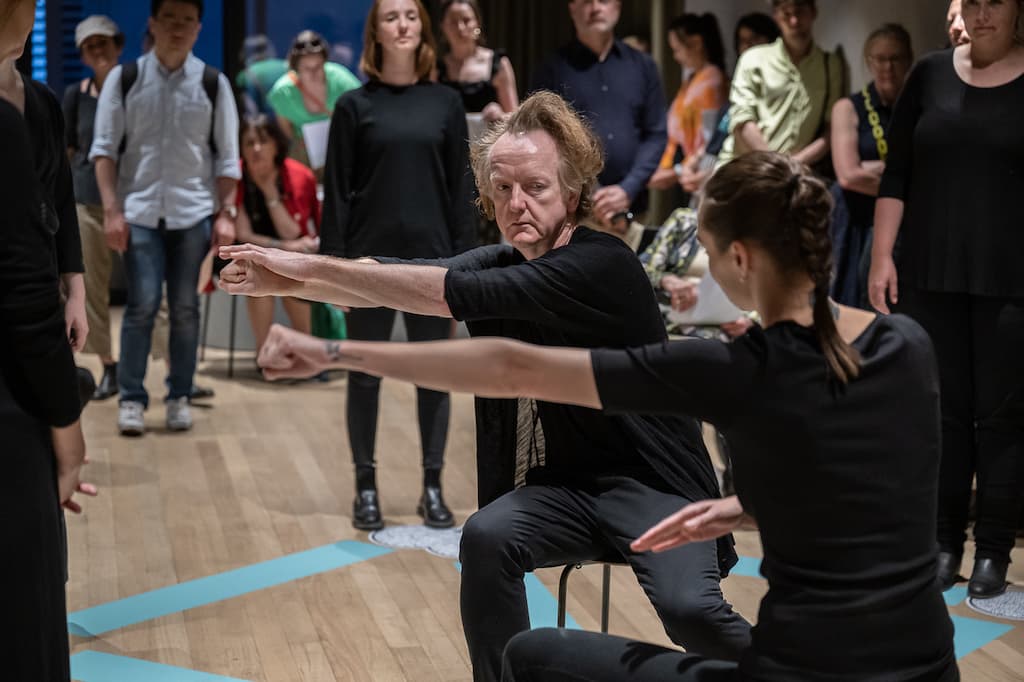

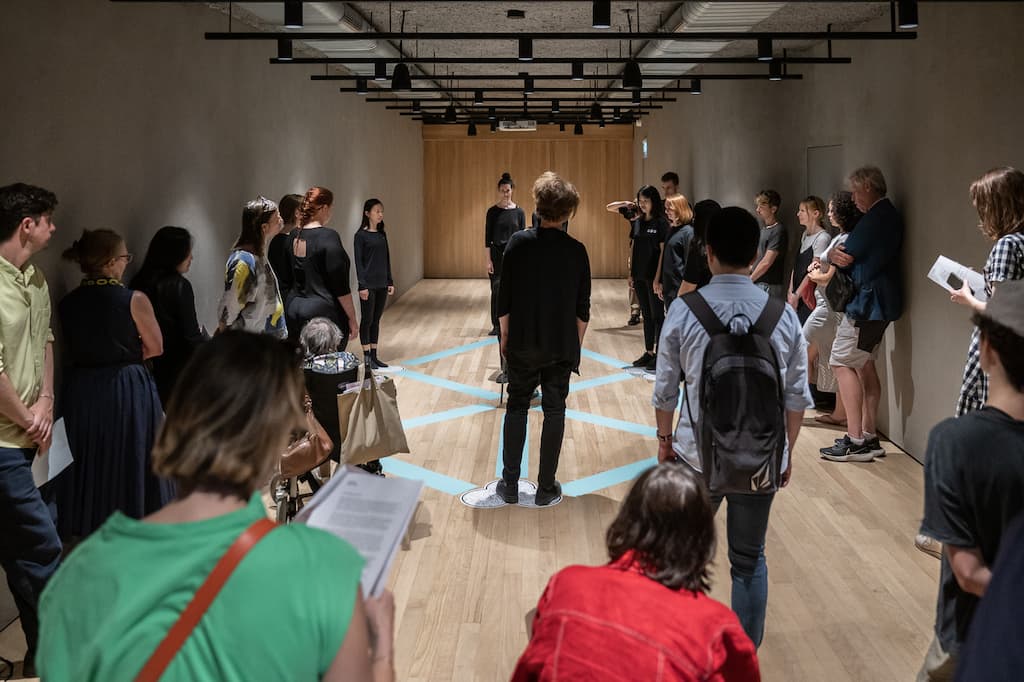
Ketty La Rocca (1938-1976) is one of the most important Italian conceptual artists to have emerged from the 1960s. She lived and worked in Florence and was associated with Gruppo 70, a group of artists devoted to visual poetry and ‘verbal-visual investigations’. She was from a generation of women artists who confidently asserted their otherness in response to the male gaze, called for subjectivity in their artistic practice and allowed the body and its gestures to “speak” for themselves.
Organic movement, hand gestures, and non-linguistic communication were central to her work. In principio erat verbum is a performance where a group of 10 people play a game designed by La Rocca. They move around the floor plan and take it in turns to communicate with the central game player seated in the centre. The use of voices or any form of sound or physical contact is not allowed and the players can only communicate using hand gestures and facial expressions.
The title of the performance In principio erat verbum (‘In the beginning was the word’ taken from St John’s Gospel) is paradoxical in that here it is not the word but rather the gestures that is the sole means of interpersonal communication, thus contradicting one of the core assumptions of Western philosophy regarding the equivalence of thought and word. La Rocca’s work sought to undermine the roots of language and the spoken word, which she saw as a part of history created by the patriarchy. She was influenced by feminist thinkers such as Carla Lonzi, especially her essay ‘Let’s Spit on Hegel’ published in 1970.
This piece was not performed during Ketty La Rocca’s life time. The first performance was at the Padiglione d’Arte Contemporanea, Ferrara, Italy in 2018. Two further performances took place in Italy this year at Castello di Nocciano, Pescara and Isola di San Servolo, Venice. The piece will be performed in London for the first time courtesy of the Ketty La Rocca Estate and Amanda Wilkinson Gallery on 8 July 2022 at 9 Cork Street as part of Performance Exchange.
La Rocca drew a clear distinction between photographs made for documentary purposes and those that are declared to be autonomous works. In 1975, for instance she wrote a note declaring that the footage of her performance Le mie parole e tu? at the faculty of Architecture as well as subsequent performances in Brescia and Rome possessed purely documentary value and did not replace the action.
‘A part of my work consists in successively reworking the material of documentation as subjective reading and writing in an attempt to restore another authenticity’
It is in this context of the artist’s wishes and her openness to collaboration, that the Ketty La Rocca Estate has issued an edition of this work in the hope it will be seen and understood by generations to come. La Rocca particularly liked working with young people and the performance is suited to collaboration with education departments, schools and collages as was the case for the first performance of the piece at the Padiglione d’Arte Contemporanea in Ferrara.
Performance Photographs, Padiglione d’Arte Contemporanea, Ferrara 2018
A set of 2 color photographs In principio erat verbum, Padiglione d’Arte Contemporanea, Ferrara, 2018.
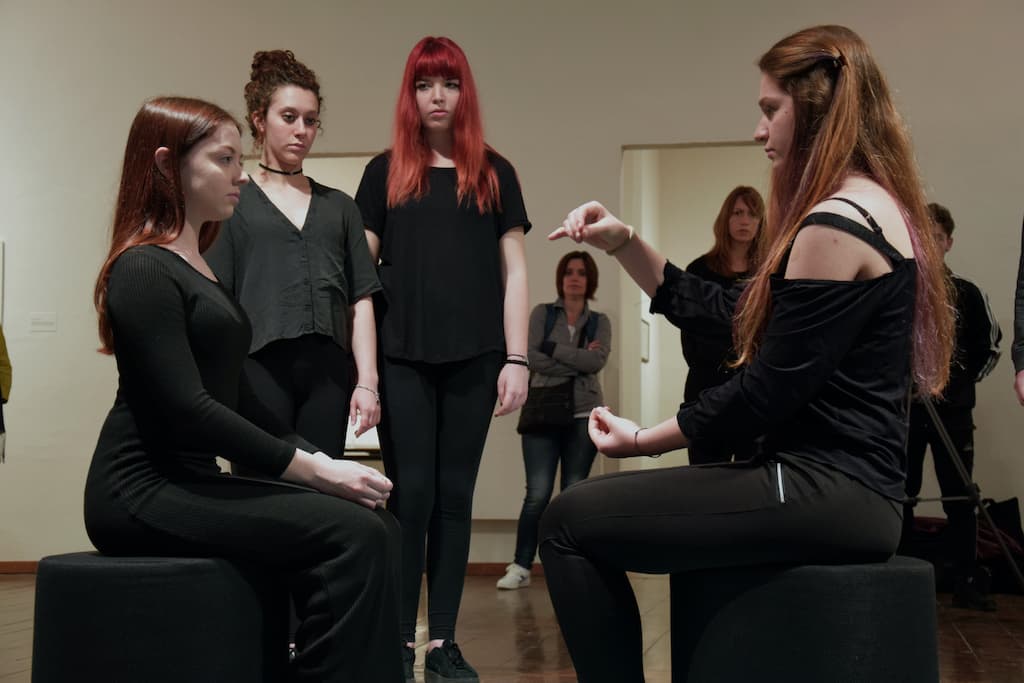
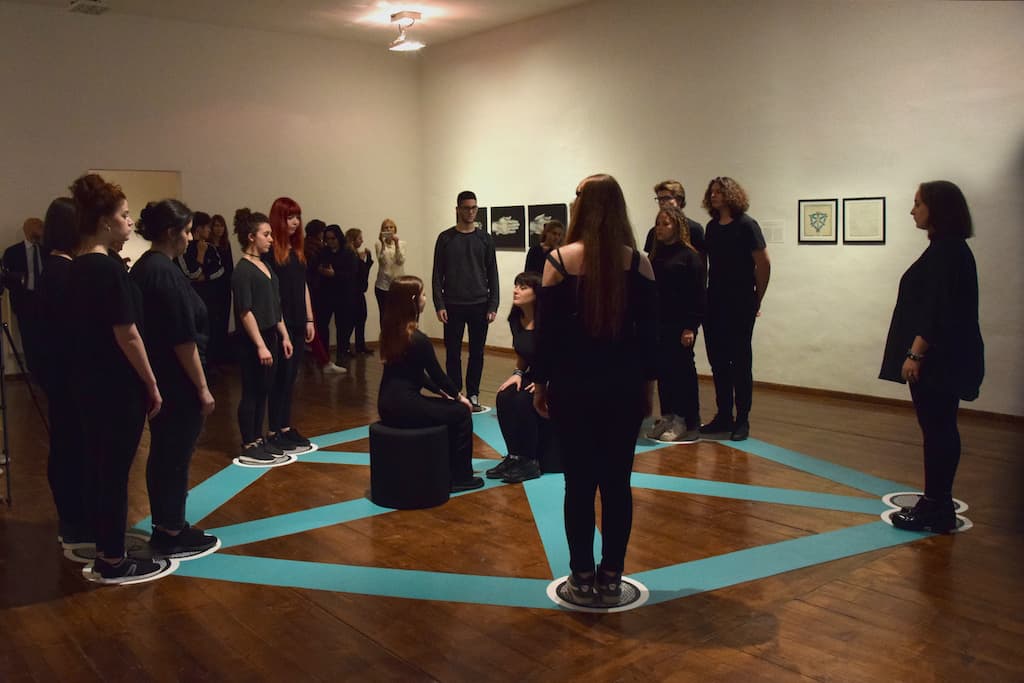
Performance Layout, Ketty La Rocca 1970-72
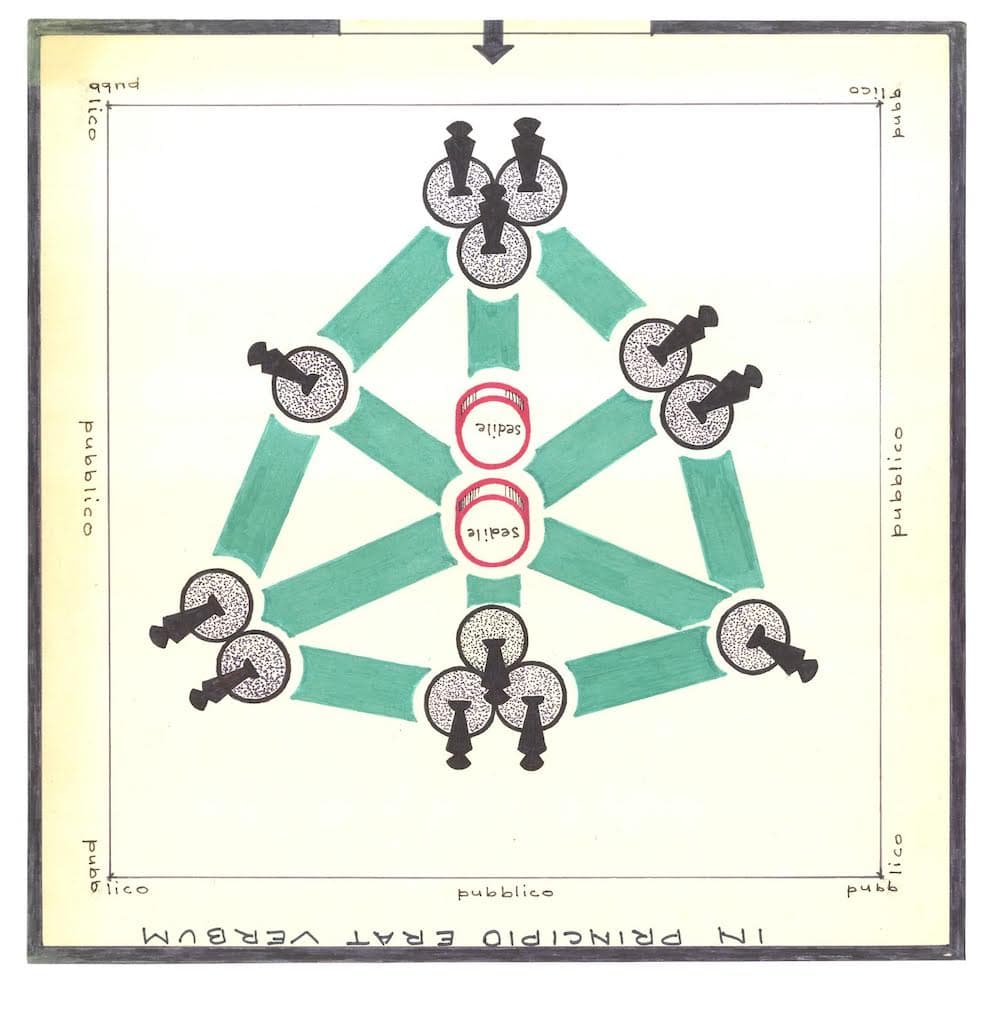
Translation of the Performance Instructions
SPAZI carchi tracciati sul pavimento
CAMMINAMENTI parcorsi obbligati
GIOCATORI coloro che si pongono nagli spazi
COLLOQUIO movimenti del viso a delle mami
INTERLOCUTORE il giocatore che si porta a colloquio
I giocatori devono porsi nagli apazi stabiliti
Un giocatore per ogni spazio
I giocatori non davono pazlare e nappure emettere vocalizzi
Pena l’escluzione dal gioco
Il colloquio avviene fra me e il giocatone che viene a porsi
Difronte
I giocatoni possone scambiarsi di posto, passana, cioe
ole una posizione isolata (spazio unico) a una posizione
di contatto (spazio a due o etra) oviceversa, seguenol
Icamminamenti
l’interlocutore sialza quando vuola interrompere
Il colloquio e sceglie chi lo sostituira
Occore, durante il gioco, cuitare ogni forma oli
contatto tisico.
SPACES circle mapped out on the floor
WALKWAYS mandatory routes
PLAYERS those who place themselves in the spaces
COLLOQUY face and hands movements
INTERLOCUTOR the player who you are talking with
The players have to enter the determined spaces
The players must not talk or vocalize,
otherwise they will be excluded from the game
The colloquy will happen between me and the players who position themselves in front of
me
The players can switch places, which means they can move from an isolated position
(single space) to a position of contact (space for two or three) or the other way around,
following the walkways
The interlocutor gets up when they want to interrupt the colloquy and choose who will be
substituting them
Collectables
- The rights to perform the work in both private and public contexts according to the original instructions as written by Ketty La Rocca. The performance has no set duration
- A plan for the floor layout to be printed on adhesive vinyl (see above). One vinyl is included in the edition
- A framed print of the original instructions and layout
- Filmed and photographic documentation of a previous performance
- Two black circular stools